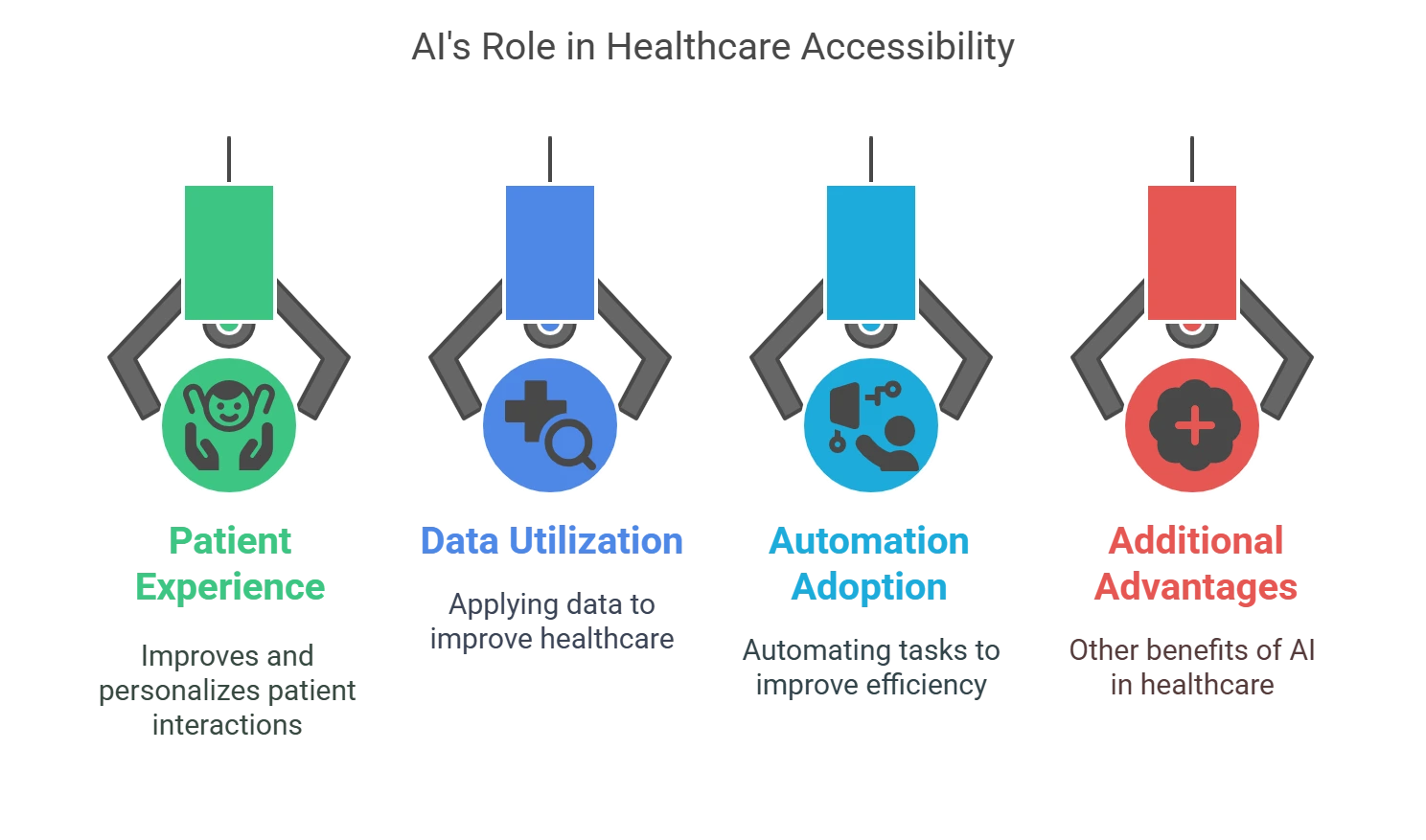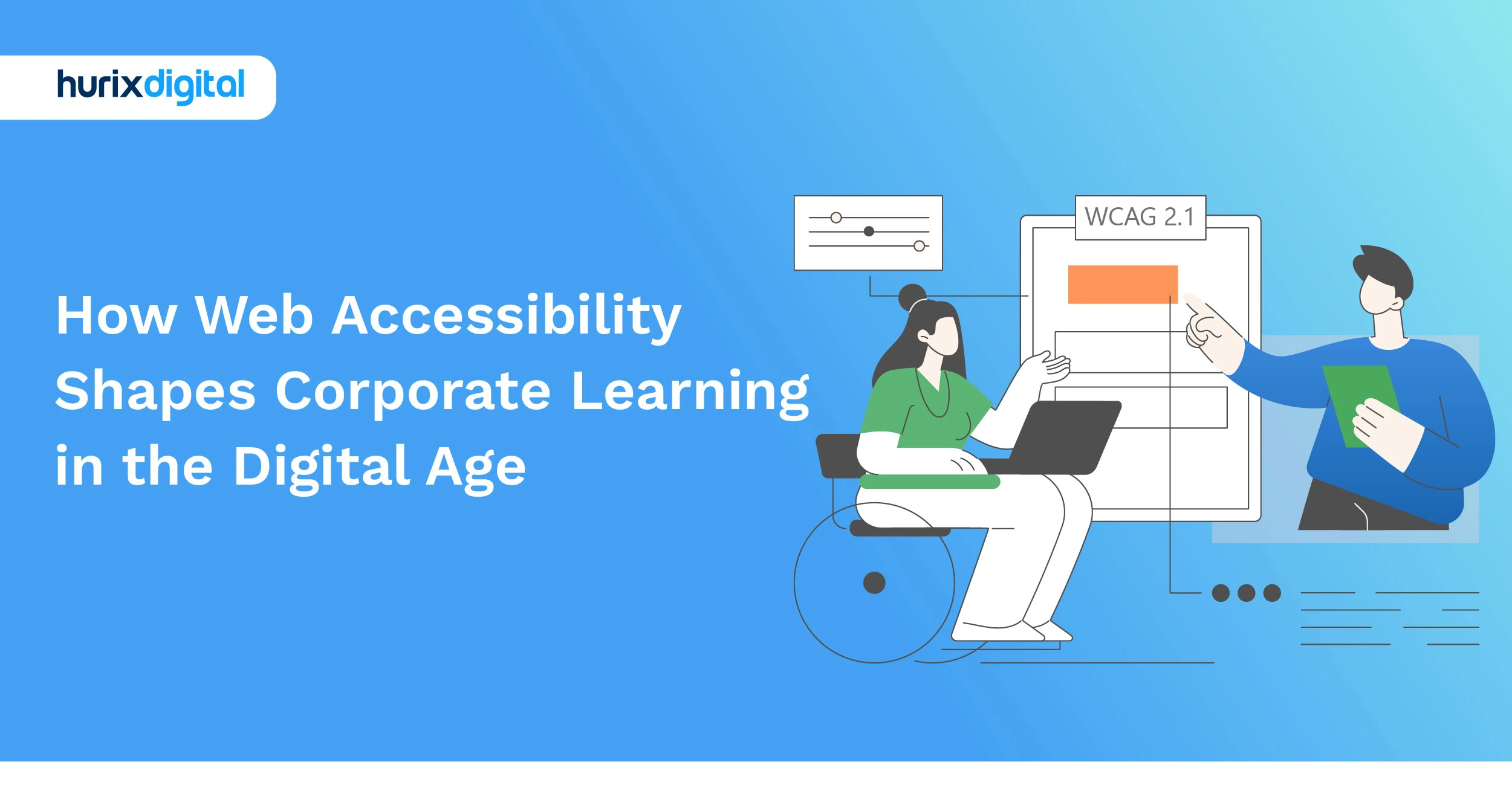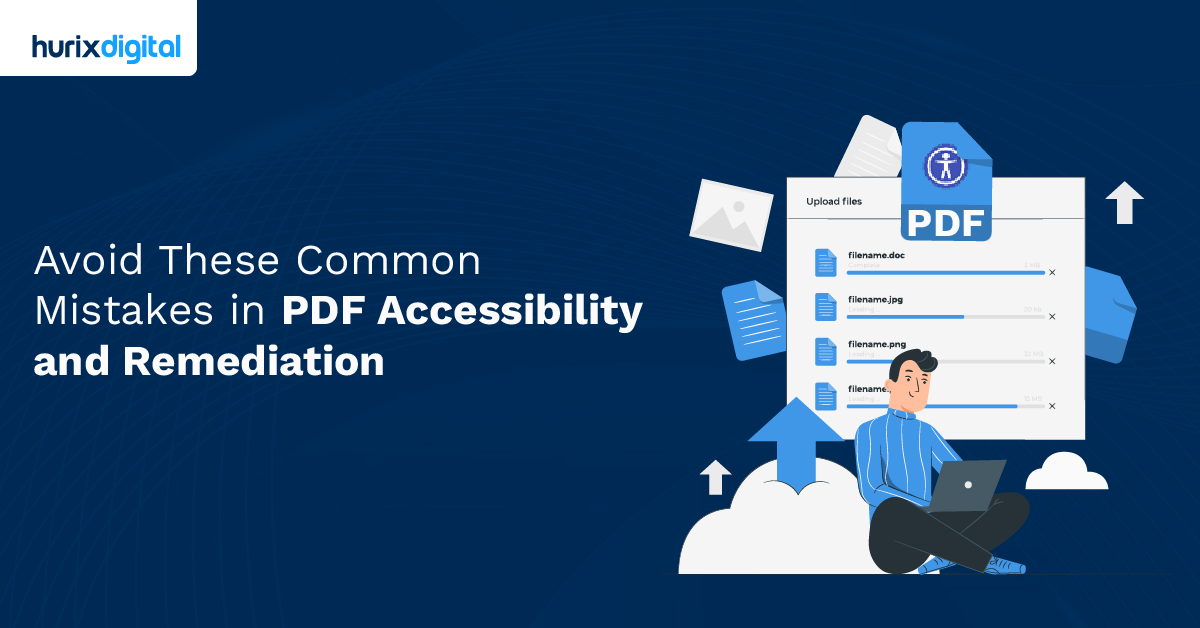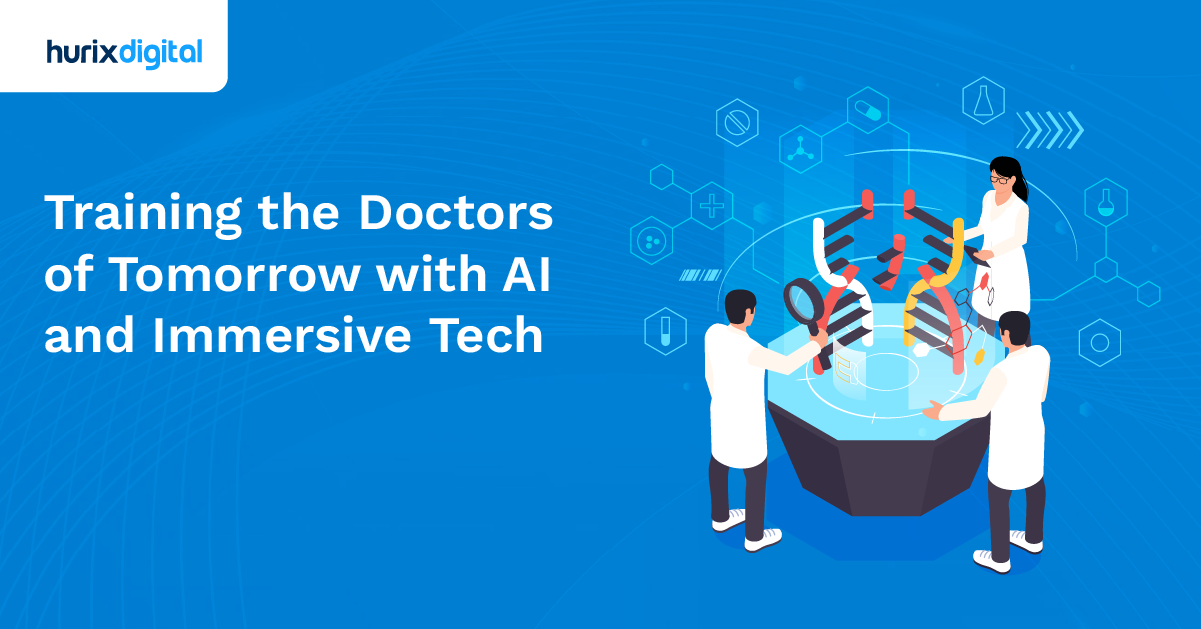
Why Healthcare Apps Must Prioritize Accessibility Now More Than Ever!
Summarize with:
The COVID-19 pandemic brought about a digital transformation across various sectors, including businesses, schools, government agencies, and significantly advanced accessibility in healthcare through telemedicine and digital health solutions.
Healthcare, amidst managing patient surges, sought lasting solutions for secure process management while upholding patient privacy. This shift to mobile apps for accessing healthcare services and medical records opened new roads for more inclusivity.
Despite efforts to enable access to healthcare resources, mobile app accessibility is still lacking in many cases.
Numerous apps and websites fail healthcare accessibility standards, such as Section 508 of the Rehabilitation Act and Section 1557 of the Patient Protection and Affordable Care Act. While prioritizing accessibility transcends mere compliance, legal actions often compel healthcare institutions to ensure digital inclusivity.
In this article, we’ll explore the core concepts of accessibility in healthcare app development, highlighting the importance of inclusive design in creating equitable access to essential medical services. Read on!
Table of Contents:
- Why is Digital Health Accessibility Important?
- Common Accessibility Challenges in Healthcare Apps
- Barriers Hampering Accessible Healthcare
- The Role of AI in Making Healthcare Accessible
- How to Design an Accessible Healthcare Application UX Design?
- Best Practices to Ensure Healthcare Application Accessibility
- Wrapping Up
Why is Digital Health Accessibility Important?
A study by the World Health Organization (WHO) suggests that an estimated 1.3 billion people, or around 16% of the total population, live with a disability. These individuals may have color blindness, age-related illness, or even mobility challenges. Hence, they often face issues when accessing digital products.
Additionally, Deloitte indicates that 10% Additionally, Deloitte suggests that 10% to 20% of the global population is neurodivergent, implying they have autism, dyslexia, and ADHD.
Unfortunately, disabilities often go hand in hand with health issues. When disabled individuals are excluded from having full access to healthcare assets, it increases the chance of poorer health consequences for those who need assistance the most.
Healthcare establishments like hospitals, urgent care centers, and clinics need to make accessible healthcare solutions a priority. By presenting content material that is accessible, these facilities ensure that patients with disabilities have an inclusive experience, leading to exceptional care than usual.
Adhering to accessibility guidelines for health apps is essential to ensure that digital healthcare offerings are usable by everyone, irrespective of their abilities. This promise of accessibility promotes equality in healthcare access and improves patient results.
Additionally, ensuring digital health accessibility is a matter of inclusivity and a strategic imperative for healthcare providers and organizations. By catering to the diverse needs of individuals with disabilities, healthcare facilities can enhance patient satisfaction, loyalty, and overall outcomes.
Common Accessibility Challenges in Healthcare Apps
To ensure inclusivity in healthcare technology, it’s critical to consider common accessibility concerns. The majority of these are connected to the user’s physical capabilities and limitations.
- Patients with visual impairments may find navigating difficult when using healthcare applications without sufficient text-to-speech support or alternative text descriptions for buttons and images.
- Complex menu structures, ambiguous labeling, and incoherent navigation patterns may make navigation difficult for users with cognitive disabilities or learning impairments.
- Individuals with motor impairments may experience disappointment and decreased usability when trying to select small touch targets on mobile devices.
- Color-blind users with low vision may find it difficult to distinguish between different elements on the screen and read text due to poor color contrast in user interface elements.
- When addressing an array of consumers, multiple modes may be necessary for forms that have specified input methods.
- Certain features might need to be responsive when a service or good is being accessed on smaller, handheld devices.
Barriers Hampering Accessible Healthcare
Several factors impact accessibility in healthcare services. To understand the application of AI better, it is important to assess these barriers first.

1. Time and Resources
Time plays a pivotal role in accessing healthcare. Patients have to wait in long lines at clinics, pharmacies, and even their insurers to access healthcare and related benefits. You need to put hours aside if you decide to get a health checkup, let alone treatment.
People don’t have that kind of time and energy and might end up escaping the entire process altogether.
2. High Costs
Accessing healthcare in a developed or developing country can burn a hole in your pocket. According to a study, around 33% of Americans tend to delay their medical treatments due to the high costs involved. The number has increased even further during the aftermath of the pandemic.
3. Lack of Knowledge
The terms used in and around healthcare are enough to confuse you and make you feel overwhelmed. Also, they do not have much knowledge regarding different ways of accessing healthcare. The entire system is designed to create a lot of confusion and panic among the patients and their caregivers.
Several other factors contribute to making the barrier even stronger. One factor is the income disparity between high-income and low-income people. The healthcare system is designed to be only accessible to people with money and resources. Other factors, like insurance, geography, etc., also contribute to building these barriers.
The Role of AI in Making Healthcare Accessible

There are different ways in which AI has tried to cut through the barriers and make significant headway in making healthcare more accessible. With the help of different digital healthcare accessibility tools, AI is bringing about a major change in the way people access healthcare. Let’s have a look at a few improved outcomes.
1. Enhances Patient Experiences
Artificial intelligence has significantly increased patient automation. It plays a pivotal role in making healthcare accessible for different patients. With AI-driven healthcare accessibility solutions, patients can easily schedule check-ups and follow-ups without standing in long hospital queues. Also, AI has enabled patients to access their health records instantly.
Several advanced tools are making use of speech recognition technology to schedule check-ups and payments without the involvement of a human. These systems are designed to effectively manage the heavy inflow of calls any healthcare facility receives.
2. Putting Data to Use
Millions of patients access healthcare and related facilities every day. While this has created a huge pool of data, it is not being used. If you start analyzing it correctly, this data can be easily used to save lives.
With machine learning, medical professionals can segregate data and analyze it to gather insights. Technologies like natural language processing help medical professionals classify clinical documents and other data and prepare reports, actively using conversational AI.
These models are trained to replicate doctor-patient interactions, which helps the doctor better understand the case. These systems have empowered AI professionals to understand their patients better, positively impacting the time spent on one patient in hospitals and clinics. All of these technologies have significantly reduced the burden on nurses and helpers, who can now focus more on providing care to patients.
3. Bringing in Automation
The healthcare industry has remained unorganized for quite some time. However, with the active use of artificial intelligence in transforming the entire space, several processes have now become automated. Accessing healthcare records, timely payment of bills, and booking appointments are some of the important areas for healthcare accessibility.
With robotic process automation or RPAs, healthcare providers have become equipped to perform redundant tasks that require a lot of manual labor. It has also helped them streamline processes, making healthcare much more accessible. It helps them save time and effort and also enables them to empower their patients with better healthcare services and access to all kinds of information about their health and well-being.
4. Other Benefits
AI has improved the efficiency of healthcare providers and is now helping them manage patients and make healthcare accessible for all. Let’s look at some other improved outcomes that AI has brought about.
- With AI, administrative tasks like paperwork and recordkeeping can be easily managed. Healthcare providers now have different models designed to manage the administrative workflow, freeing up resources and better using them.
- Virtual nursing assistants, another AI-backed feature, have received widespread acceptance. They allow patients to get answers to questions about medicines and other remedies. People can access these assistants from the convenience of their homes. Hence, they make healthcare accessible and significantly reduce the burden on healthcare providers’ shoulders.
- AI has enabled healthcare professionals to identify errors and fix them in real-time. This includes correcting dosages for self-medications and other record-keeping issues. Healthcare education has become easier with AI.
How to Design an Accessible Healthcare Application UX Design?
It is crucial to develop an accessible healthcare user experience (UX) to guarantee that all individuals, irrespective of ability, can utilize, comprehend, and gain advantages from digital healthcare services.

The most effective way to get started is by complying with accessibility standards for healthcare apps. Here are some effective strategies for the best possible outcomes!
1. Embracing the Principles of Universal Design
The tenets of inclusive design center on making surroundings, solutions, and goods simpler to use regardless of users’ conditions or skills. In terms of the healthcare user experience, this means developing digital health systems that are easy to use, understandable, and accessible to the largest number of users.
Mobile health app accessibility can be greatly improved by including several navigation methods, such as touch, spoken instructions, mouse interactions, and typing inputs. This guarantees that users of various skill levels can efficiently interact with the application.
2. Abiding by the Web Content Accessibility Guidelines (WCAG)
Organizations can benefit from WCAG by offering digital accessibility to healthcare technology. Detailed instructions for designing accessible and intuitive digital user interfaces can be found in these guidelines.
They also offer helpful instructions, such as ensuring text descriptions are included for nontextual content and allowing full keyboard features. By adhering to these guidelines, you can produce adaptive content that looks great across a range of formats without losing any data.
For example, text-to-speech technology makes it easier for users to read screen text and makes app navigation simpler. To enable text-to-speech software to explain the website’s visuals, icons, and other visual components, healthcare apps and websites must adhere to the WCAG principle of offering text alternatives for nontextual content.
3. Providing User Evaluations and Responding to Input
Evaluating the accessibility of a healthcare application is an ongoing process integrated into its phases of development and updates rather than a one-time endeavor.
By implementing the routine evaluation of healthcare services, the team can ensure that accessibility standards are upheld or even exceeded as an application develops.
You can enhance the user experience and demonstrate your dedication to accessibility guidelines for healthcare applications by routinely soliciting user input and promptly addressing issues. For instance, you must test an application on a range of users, including people with disabilities, to garner various accessibility-related comments.
Best Practices to Ensure Healthcare Application Accessibility
Developers should adhere to best practices for designing accessible UX when developing healthcare applications to solve these accessibility issues and produce inclusive and user-friendly applications for all patients. Among the crucial factors are:
- Keyboard Accessibility: Ensure that all of the application’s interactive components are keyboard accessible so that users can use keyboard controls to navigate the interface instead of a mouse or touch screen.
- Use of Alt Text: To guarantee that users with visual impairments can comprehend the content and features of images, buttons, and icons, present alternative text explanations for each element.
- Color Contrast: Avoid depending just on color to convey data; instead, use high-contrast color schemes. Ensure the important elements stand out visually and the text is readable against the background.
- Consistent Navigation: To make the application easier to use and comprehend for users with cognitive disabilities or learning impairments, keep the navigation patterns unified and the labeling apparent.
- Text Resize and Zoom: Let users resize text and enlarge content to meet varying visual requirements and choices. This will guarantee that text is always readable and accessible.
- Multimodal Interactions: These guarantee that users can react to interactive components in an application by using more than one sense modality. This involves integrating responses that are tangible, visual, or auditory to support a greater variety of user requirements and skills.
- Form Design: To help users complete tasks properly, optimize form fields, and include clear instructions. You can use relevant form validation messages and error handling to guide users.
- Language Diversity: Since digital healthcare is international, UX designers must consider language diversity. Thus, to improve a platform’s accessibility for users who need to be fluent in the default language, think about assisting in multiple languages.
- Simple User Interface: The intricacy of healthcare systems frequently overwhelms users. UX designers can resist this propensity by creating user interfaces for applications that are straightforward to understand and use standard symbols, organized designs, and intuitive navigation.
Wrapping Up
Elderly people who live distant from medical facilities can benefit from healthcare accessibility that extends beyond physical locations. Access to these treatments is greatly influenced by remote access, lower risk of infection, and prompt medical advice.
It could seem difficult to start on the path towards making digital healthcare accessible. But getting started with these basic practices might be beneficial. By upholding digital accessibility, you may reduce care gaps, encourage inclusivity, and improve service accessibility.
Hurix Digital is a digital content solution provider that may aid your organization if it requires support with inclusivity and accessibility criteria.
Through specialized software development and healthcare eLearning services, we are a leader in offering products that are accessible to healthcare. Reach out to us to broaden the audience for your medical services.
Summarize with:

Vice President – Content Transformation at HurixDigital, based in Chennai. With nearly 20 years in digital content, he leads large-scale transformation and accessibility initiatives. A frequent presenter (e.g., London Book Fair 2025), Gokulnath drives AI-powered publishing solutions and inclusive content strategies for global clients
 Upcoming Masterclass | Build an Army of Brand Evangelists using Training & Development | November 20th, 8:30 AM PDT | 11:30 AM EDT | 10:00 PM IST
Upcoming Masterclass | Build an Army of Brand Evangelists using Training & Development | November 20th, 8:30 AM PDT | 11:30 AM EDT | 10:00 PM IST





